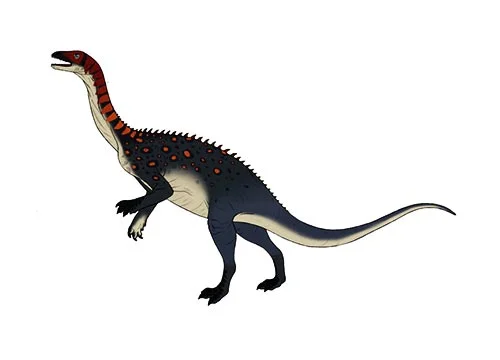Ammosaurus (sand lizard)

ah-moh-sore-us
Othniel Charles Marsh - 1891
Herbivore
Estimated 5 meters long
Sauropod
A. major (type)
USA – Portland Formation
Early Jurassic, 195-180 million years ago
Ammosaurus Facts
Ammosaurus (“sand Lizard”) is a genus of sauropodomorphs that was found in during the Early as well as the Middle Jurassic Period of North America. It was a multi-faceted animal that was able to move bipedally and quadruple, and could be Omnivorous.
It is an early member in the suborder Sauropodomorpha and is the closest with Anchisaurus and could be a synonym. The relationship between Ammosaurus to other dinosaurs remain a mystery in the present. Marsh initially described Ammosaurus major in the form of Anchisaurus major, but changed the animal from its original genus two years later.
Recent research has suggested that Ammosaurus and Anchisaurus are one and the same animal in the end. The fossils of Ammosaurus were found inside the Portland Formation of the Newark Supergroup, which has preserved an arid climate with intense dry and wet seasons from 200-195 million years ago.
It is highly likely Ammosaurus is a subjective synonym of the species. Three other skeletons in a state of incompleteness from different ages are recognized from Connecticut, but Ammosaurus remains in Bajocian stages of North America, making it one of the rare “prosauropod” genera to survive through The Middle Jurassic.
It is believed that the Navajo Sandstone of Arizona is identical to that of the Portland Formation, but it is possible that they belong to the Genus Massospondylus that is known as a distinct species in South Africa.
Scientists have discovered prosauropods from the McCoy Brook Formation in Nova Scotia, providing clues to the diet of the creatures. However, the remains have not been completely described or illustrated and were not formally attributed to Ammosaurus. Another study has found them to be a new sauropodomorph taxon, Fendusaurus Elloni.



